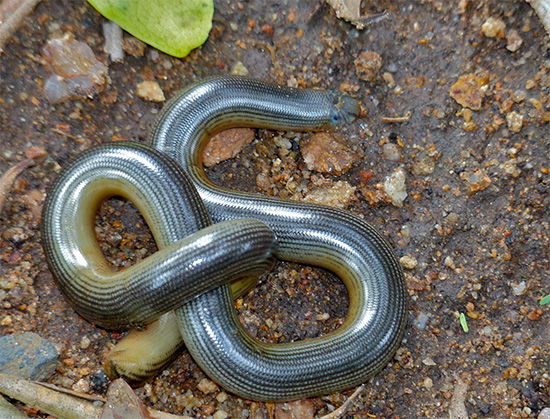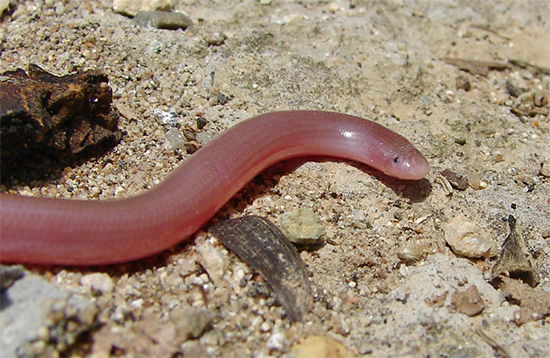SSSubterranean, SSSightless, SSSSSSSnake!
Rehman Abubakr, CC BY-SA 4.0 via Wikimedia Commons
Typhlopidae
by Inspector Barry Mins on June 28, 2022Hey kids, welcome back to our series on the mysteries of created kinds.
This week, we are digging into the ground, looking for something that looks like a wriggling worm but is actually a snake.

While there are a lot of species in this particular kind, very little information exists about them. Perhaps this is due to their habitat, as they tend to live underground in burrows and holes, only rarely coming above ground. While most people think of worms as small and short, some of these snakes can reach rather large lengths. One species can reach over two feet in length.1 Unlike many snakes, these snakes cannot unhinge their jaws to swallow prey, limiting their diet to smaller items they can fit in their mouths.2 Beyond these few details, and the fact that these snakes are either blind or close to it, little is known about this kind, likely due to its cryptic, or secretive, nature.
Has anyone figured it out yet? I won’t blame anyone if they have not. There is so little data out there that I struggled to pull together an article this week. This week’s kind is the Typhlopidae—the blind snake kind.
Try out this fun word search!
Clue
Here is your clue for next week:
This kind is found exclusively in sub-Saharan Africa and likes to spend time in the mud at the bottom of rivers and lakes.
Ask a Question
Have you ever had a question about created kinds but didn’t know who to ask? Have you ever wanted to learn more about your favorite kind? Well, now you can! You can ask me, Inspector Barry Mins, a question! Have your parents help you fill out this form, and you might get your question answered in my column! If you have any questions about created kinds, feel free to send them my way!
Footnotes
- R. Vyas, K. Bhatt, and I. Gadhvi, “Length record of the beaked worm snake (Rhinotyphlops acutus) and its distribution in Gujarat,” Zoo’s Print Journal, 16, no. 7 (2001): 549-550. See all footnotes
- A. Martins, V. Deolindo, C. Koch, and M. Joshi, “To move or not to move? Skull and lower jaw morphology of the blindsnake Afrotyphlops punctatus (Leach, 1819) (Serpentes, Typhlopoidea, Typhlopidae) with comments on its previously advocated cranial kinesis,” The Anatomical Record, 304, no. 10 (2021): 2279-2291. See all footnotes
- © 2025 Answers in Genesis
- Privacy Policy
- Contact
- About


